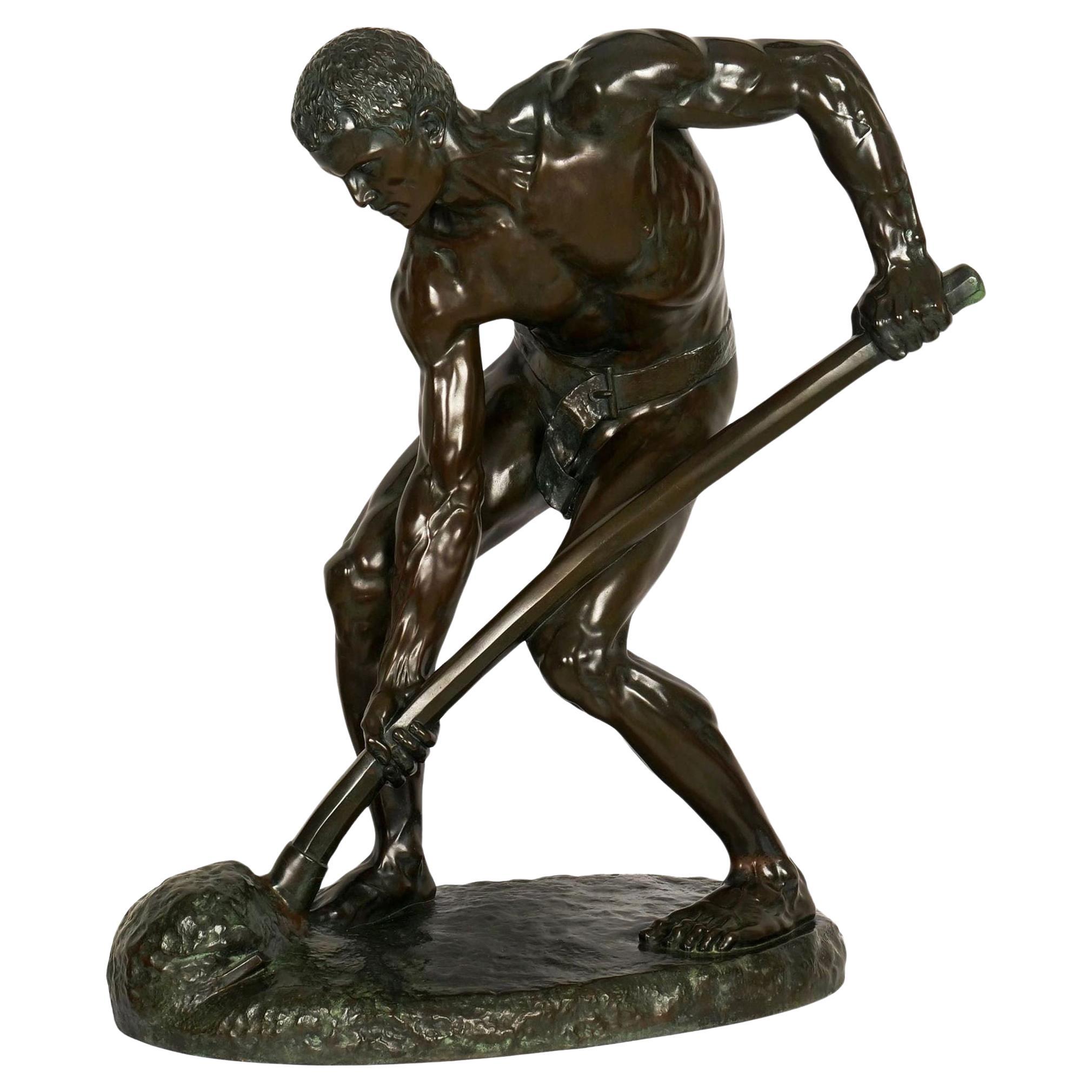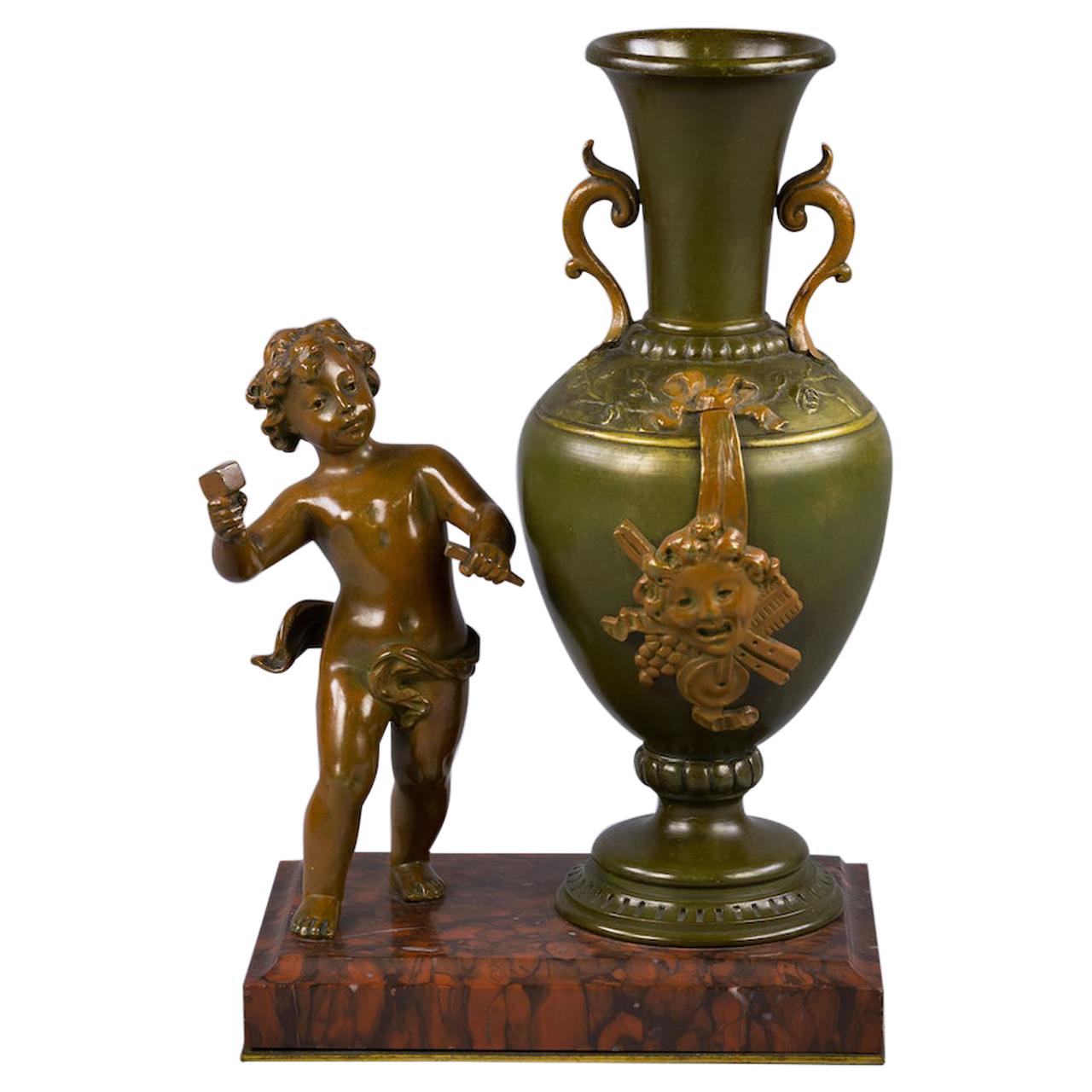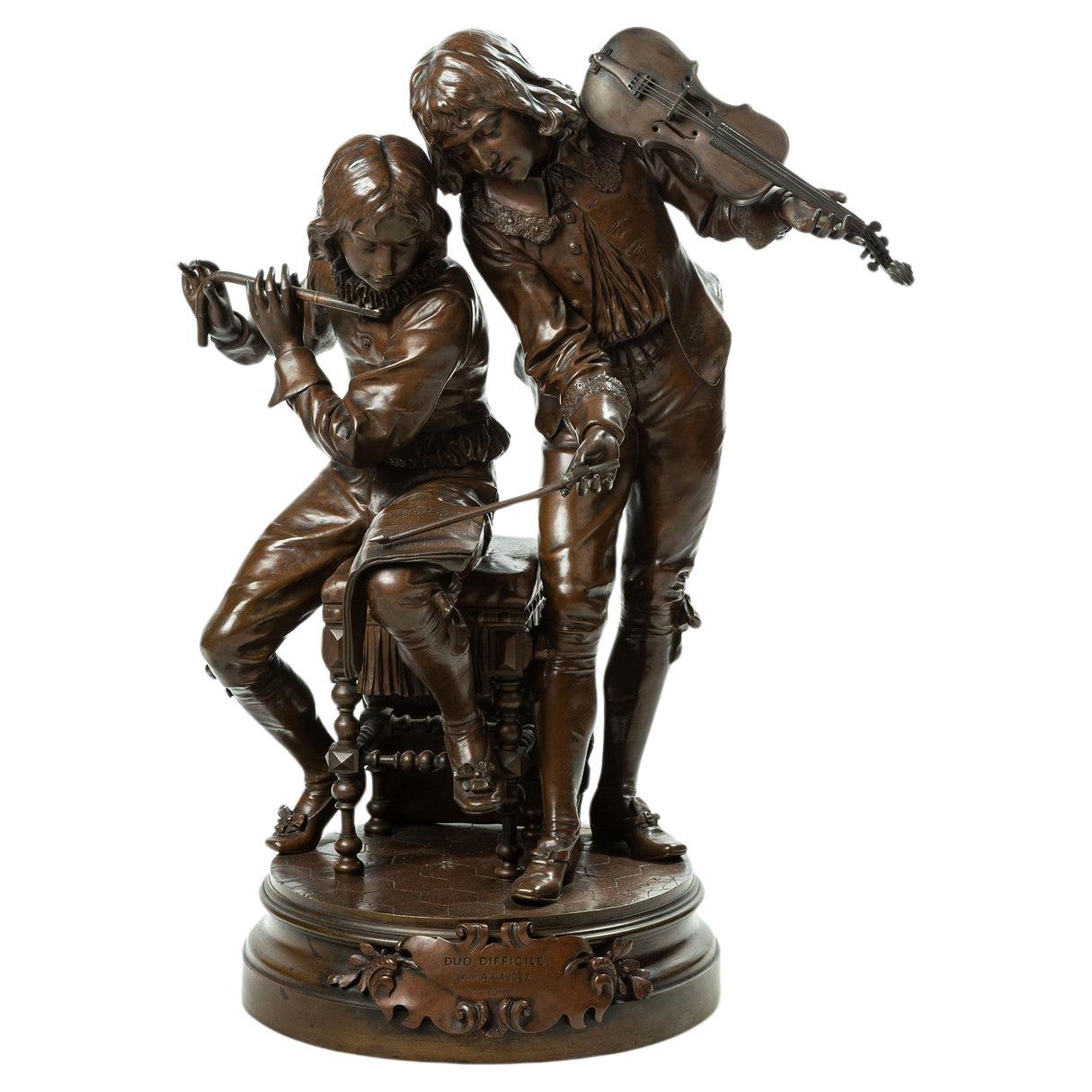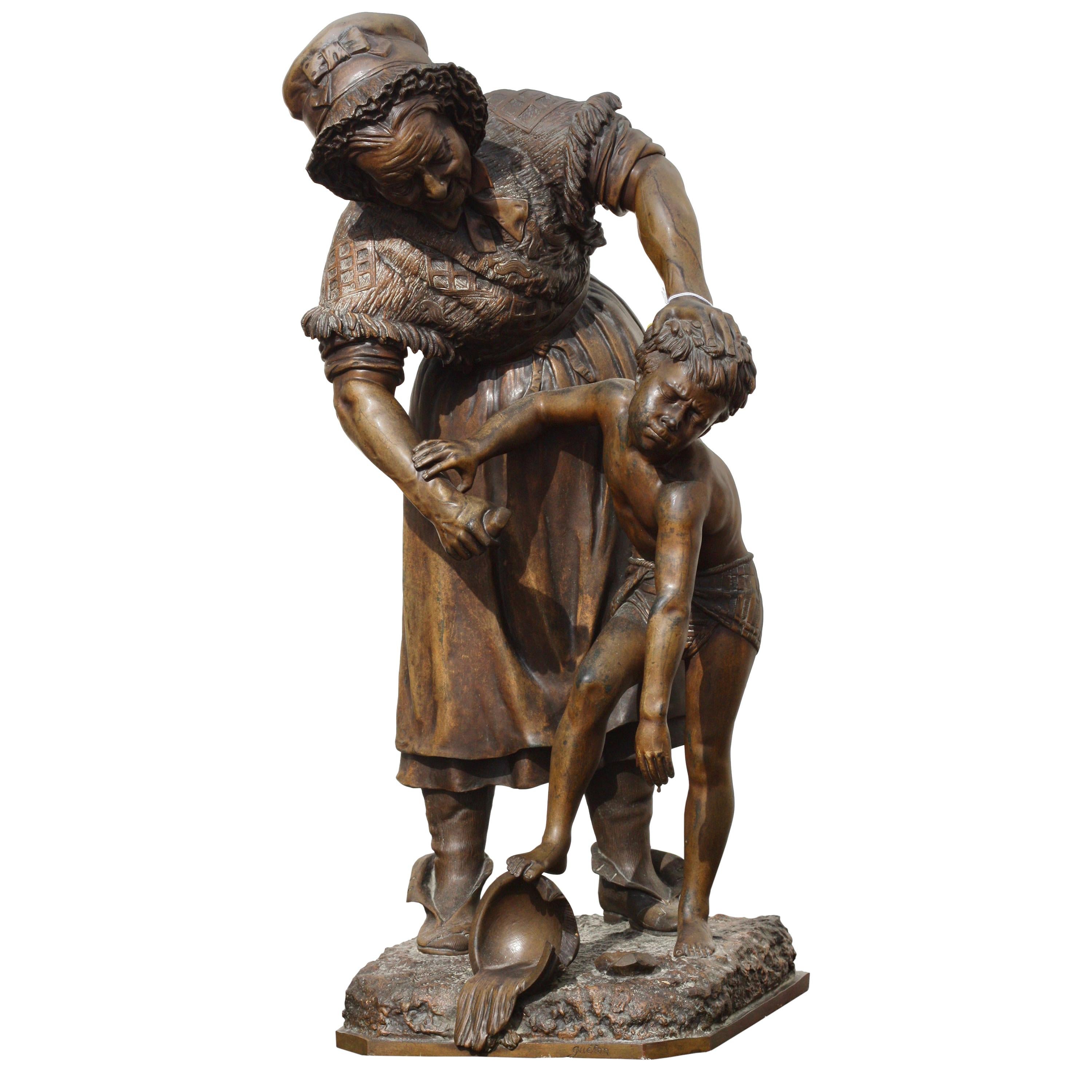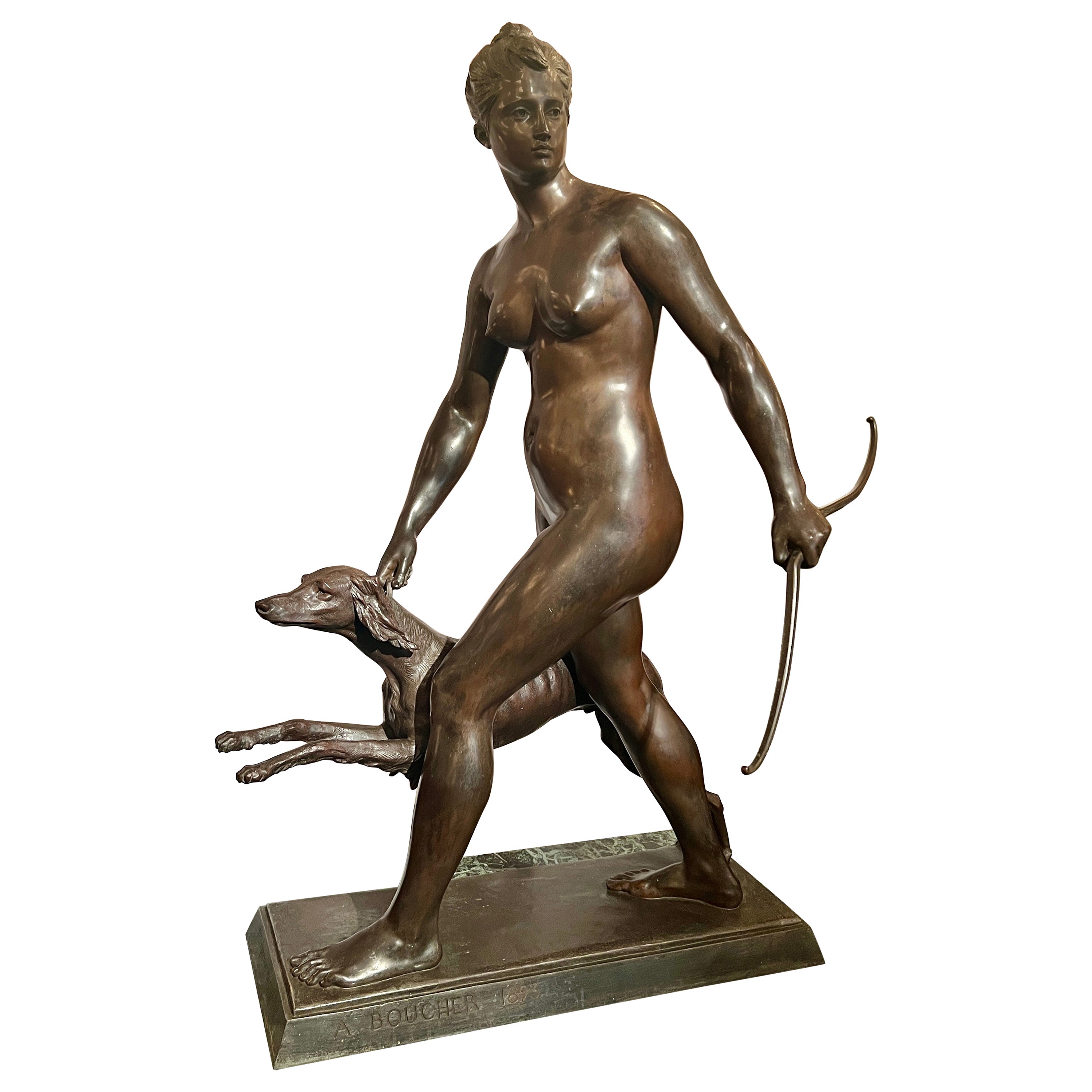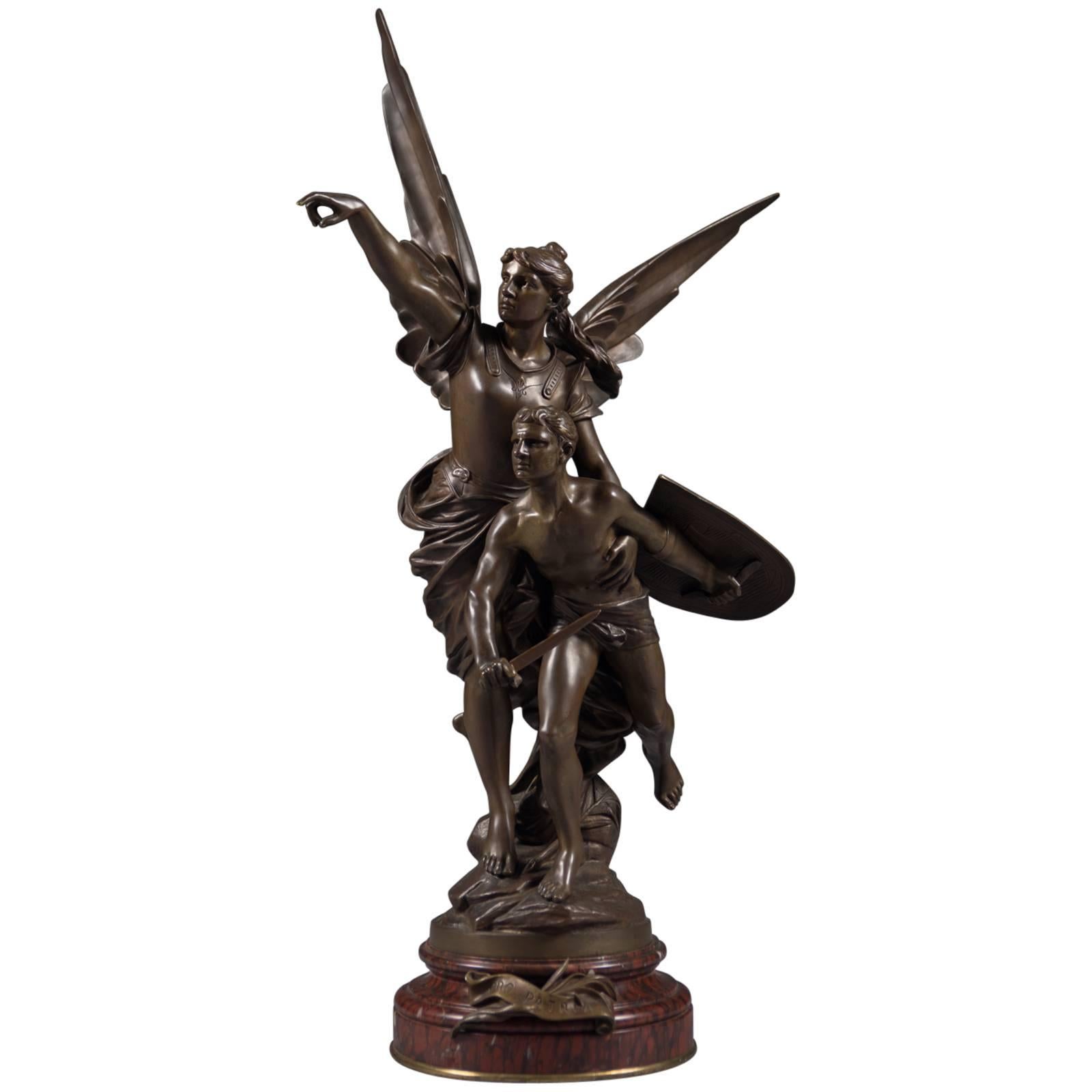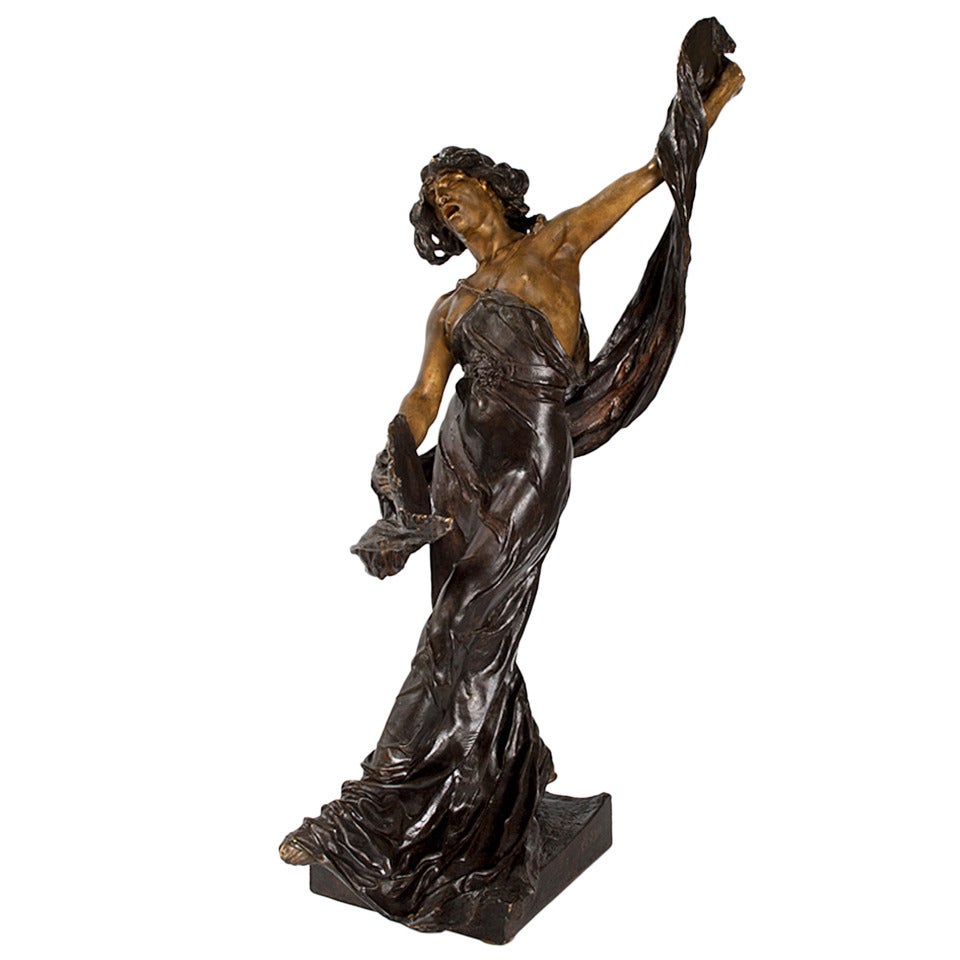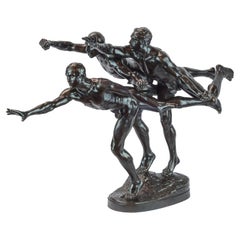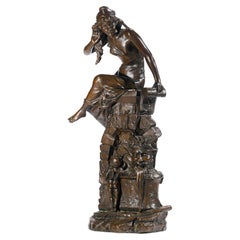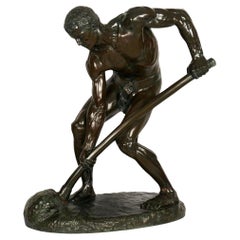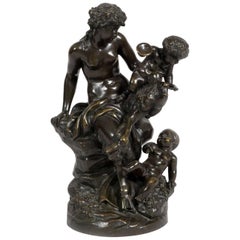
Patinated Bronze Figural Group Sculpture by Alfred Boucher
View Similar Items
Want more images or videos?
Request additional images or videos from the seller
1 of 7
Patinated Bronze Figural Group Sculpture by Alfred Boucher
About the Item
- Creator:Alfred Boucher (Artist),Siot-Decauville (Maker)
- Dimensions:Height: 13 in (33.02 cm)Diameter: 16 in (40.64 cm)
- Materials and Techniques:
- Place of Origin:
- Period:
- Date of Manufacture:19th Century
- Condition:
- Seller Location:New York, NY
- Reference Number:Seller: SB121621-031stDibs: LU4745226642072
About the Seller
5.0
Vetted Seller
These experienced sellers undergo a comprehensive evaluation by our team of in-house experts.
Established in 1986
1stDibs seller since 2019
39 sales on 1stDibs
Typical response time: 8 hours
More From This SellerView All
- Patinated Bronze Figural Group Sculpture Entitled 'Au But' by Alfred BucherBy Alfred BoucherLocated in New York, NYA fine patinated bronze figural group sculpture entitled "Au But" (The Finishing Line). Artist: Alfred Boucher (French, 1850-1934) Date: Late 19th century ...Category
Antique 19th Century French Figurative Sculptures
MaterialsBronze
- Patinated Bronze Figural Group Sculpture Entitled "Au But" 'The Finishing Line'By Alfred Boucher, Siot-DecauvilleLocated in New York, NYA fine patinated bronze figural group sculpture entitled "Au But" (The Finishing Line). Cast by Siot-Decauville from a model by Alfred Boucher; with Siot-Decau...Category
Antique 19th Century French Figurative Sculptures
MaterialsBronze
$18,000 Sale Price21% Off - Fine Patinated Bronze Sculpture by Édouard DrouotBy Edouard DrouotLocated in New York, NYSculpture of young woman Titled "The Secret".Category
Antique 19th Century French Figurative Sculptures
MaterialsBronze
- Patinated Bronze Group Entitled 'L'Amour Désarmé' by Alexandre DercheuBy Jules DercheuLocated in New York, NYA nude girl holding cupid away with her left arm, her left foot on his quiver, on a circular base, seated on a rock signed 'Dercheu' to the back, the front inscribed ‘L’Amour Désarmé...Category
Antique 19th Century French Figurative Sculptures
MaterialsBronze
- Fine Patinated Bronze Group Depicting an Egyptian PrincessBy Etienne-Henri DumaigeLocated in New York, NYAn Egyptian princess adorned with jewelry and wearing diaphanous robe with sandaled feet stands to sinister as her crouching slave at her side holding her discarded cloak. Signed 'H. DUMAIGE' on the cloak. Artist: Étienne Henry...Category
Antique 19th Century French Figurative Sculptures
MaterialsBronze
- Important Patinated Bronze Group Depicting Cupid and PsycheBy Henri GodetLocated in New York, NYTitle: The Abduction of Psyche Maker: Henri Godet (French, 1863-1937) Date: circa 1896 Dimension: 40 in. x 16 in. x 10 in. Notes: The love story of cupid and the beautiful pri...Category
Antique 19th Century French Figurative Sculptures
MaterialsBronze
You May Also Like
- “A la terre!” French Antique Bronze Sculpture by Alfred Boucher & BarbedienneBy F. Barbedienne Foundry, Alfred BoucherLocated in Shippensburg, PABronze sculpture model of "A La Terre!" (1890) after Alfred Boucher Signed to naturalistic base "A. Boucher", inscribed "F. Barbedienne Fondeur" Item # 008AMH08W This powerful mode...Category
Antique 19th Century French Figurative Sculptures
MaterialsBronze
- Two-Toned Patinated Bronze Figural Group, circa 1880Located in New York, NYDepicting a figure chasing the bronze vase on rouge marble base.Category
Antique 1880s French Vases
MaterialsBronze
- Rococo Style Patinated Bronze Figural Group after ClodionBy Claude Michel ClodionLocated in London, GBThis exquisite Rococo style sculpture depicts a moment of revelry, showing a woman with two infants. She is shown holding one of them on her lap, and with another below. The naturali...Category
Antique 19th Century French Rococo Figurative Sculptures
MaterialsBronze
- Patinated Bronze Sculpture/Figure of a FrogLocated in Guaynabo, PRThis is a patinated bronze medium size sculpture of a sitting frog with its right hand in the chest (it’s heart). This gesture symbolizes dignity and hono...Category
20th Century Unknown Modern Animal Sculptures
MaterialsBronze
$521 Sale Price25% Off - ‘Gloria Victis’, A Patinated Bronze Figural Group by Mercié, Cast by BarbedienneBy Ferdinand BarbedienneLocated in Brighton, West SussexA Patinated Bronze Figural Group of ‘Gloria Victis’ (‘Glory to the Vanquished’), Cast by Ferdinand Barbedienne from the Model by Marius-Jean-Antonin Mercié (French, 1845-1916). ‘Gloria Victis’ (‘Glory to the Vanquished’). Bronze, gilt and dark brown patina. Signed 'A. Mercié', with foundry inscription 'F. BARBEDIENNE, Fondeur. Paris.' and A. Collas reduction cachet. The integral base titled 'GLORIA VICTIS'. This cast is part of a limited edition by the Barbedienne Foundry. France. Circa 1880. ‘Gloria Victis’ is one of the most recognisable and important works of sculpture of the nineteenth century and a definitive image of France’s historic national identity. The figure of glory, winged and wearing armour, carries a dying young warrior heavenwards towards fame and immortality. The compositional daring of the group must be admired for balancing two figures on the minimal support of one foot, wings spread in the moment before taking flight. Mercié was a student at the French Academy of Rome when the Prussians invaded France in 1870. Shortly after the war had begun, he executed a group depicting the figure of Fame supporting a victorious soldier. When news reached Mercié in Rome that the French had surrendered, he decided to alter his group, replacing the victorious soldier with a defeated casualty, thus transforming an allegory of ‘Glory to the Victors’ into one of ‘Glory to the Vanquished’. Completed in 1872, a year after the defeat of French soldiers against the Prussian army, the statue personifies a defeated but heroic France. The title is also a reversal of the famous formula, ‘Vae Victis’ (Death to the Vanquished), which the Gallic general Brennus exclaimed upon defeating the Romans in 390 BC. The figure of the fallen soldier was thought to represent Henri Regnault, a fellow sculptor of Mercié who was killed on the last day of fighting. Measuring 317 cm. high the original group of ‘Gloria Victis’ was unveiled in plaster at the Salon of 1872. It was bought by the City of Paris for the sum of twelve thousand francs and then cast in bronze by Victor Thiébaut for eight thousand five hundred francs. The bronze was exhibited at the Salon in 1875 and first placed in Montholon Square in the 8th arrondissement. In 1884 it was transferred to the courtyard of the Hôtel de Ville and in 1930, it entered the collection of the Musée du Petit Palais, where it can be seen to this day. The Thiébaut Frères foundry also cast Gloria Victis bronzes for the cities of Niort (requested 1881) Bordeaux (requested 1883), Châlons-sur-Marne (today, Châlons-en-Champagne; requested 1890), and Cholet (requested 1901). In 1905, the Danish brewer and art collector Carl Jacobsen was permitted to have an exact cast made of the original sculpture in Paris, on condition that the base was made 2 cm lower and bore the inscription “Original tilhører Paris By” (The original belongs to the City of Paris). It too was cast by the Thiébaut Frères foundry. Gloria Victis was one of Jacobsen’s most important and his last acquisition. Today it has been returned to its original position in the Winter Garden at Glyptoteket, Copenhagen, Denmark. The full-size plaster was shown again at the Paris Expositon universelle of 1878 alongside a bronze reduction by Barbedienne. By this time Antonin Mercié had entered into a commercial edition contract with the Ferdinand Babedienne foundry to produce bronze reductions of Gloria Victis, his most famous work. Gloria Victis is first recorded to have been produced in three sizes and by 1886 Barbedienne’s ‘Catalogue des Bronzes D’Art’ lists six sizes measuring 3/5, 9/20, 7/20, 3/10, 6/25 and 2/10, of the original. These reductions were produced by an invention of Barbedienne’s business partner Achille Collas. The Collas reducing machine was a type of complex mechanical pantograph lathe that enabled sculpture to be mathematically measured and transcribed to scale, in the round, thus making a reduced size plaster from which a bronze could be cast. Mercié's modern sculpture had become an instant classic, even receiving an entry in the Nouveau Larousse Illustré. The success of the group undoubtedly lay in the fact that it was admired not just on an aesthetic level, but also on a patriotic level, particularly in its commemoration of heroism in defeat. Immediately ‘Gloria Victis’ was recognised as a national artwork, capable of arousing patriotism and casts were ordered from Barbedienne as local memorials commemorating the war’s dead for cities across France. ‘Gloria Victis’ was considered so much a part of France’s national identity that for the 1900 Paris Exhibition, Ferdinand Barbedienne’s nephew Gustave Leblanc, loaned a bronze example to feature as part of l’Exposition centennale de l’art français. Literature: For an interesting account of the process of creating a reduction in bronze of the Gloria Victis by Barbedienne and illustrations of the casting and finishing of the bronze see: 'Ferdinand Barbedienne': Theodore Child; Harper's new monthly magazine, Volume 73, Issue 436, September 1886. ‘Contemporary French Sculptors’: The Century, Volume 33, Issue 3, Jan 1887. ‘Modern French Sculpture’: Harper's new monthly magazine, Volume 76, Issue 452, January 1888. S, Lami, ‘Dictionnaire des sculpteurs de l'Ecole française au dix-neuvième siècle’, Tome III. G.-M., Paris, 1914, p. 432. Peter Fusco and H.W. Janson, The Romantics to Rodin: French Nineteenth Century Sculpture from North...Category
Antique 19th Century French Figurative Sculptures
MaterialsBronze
- Antonin Guéton a Rare and Fine Patinated Bronze Figural GroupLocated in West Palm Beach, FLAntonin Guéton (1886-1941) A rare and fine patinated bronze figural group of a woman washing a boy's mouth out with soap. Inscribed Gue'ton. Height 30 in. (76.2 cm.).Category
20th Century Figurative Sculptures
MaterialsBronze
Recently Viewed
View AllMore Ways To Browse
Marathon Bronze Statue
Raffaello Scarf
Jean Lormier
Robert Garrett Thew
Art Deco Sculpture Max Le Verrier
Life Size Knight Armor
Large Gilt Bronze Sculpture
Hera Sculpture
Wood Sculpture Object
Patinated Plaster
Classical Ancient Greek
Alexander The Great Sculpture
Brass Chariot
Antique Bronze Helmet
1979 Ceramic Sculpture Of A Woman
Pyramid Marble Pedestal
Anchor Figurine
Congo Ceramic

